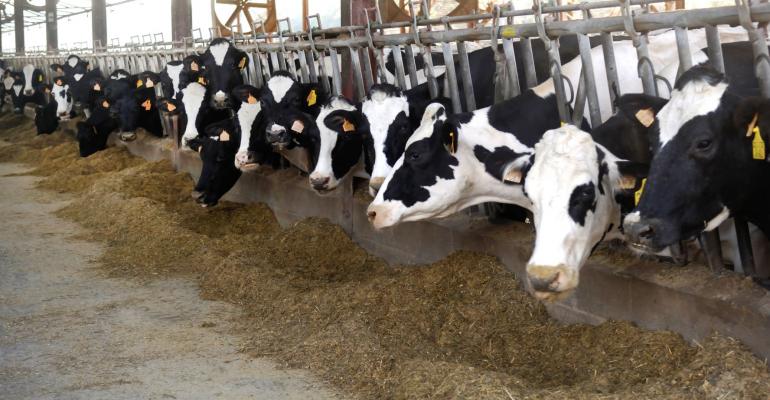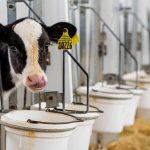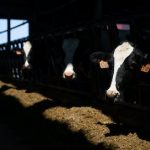
Worsening drought in the Midwest, lower-than-expected milk prices paint a grim picture.
Margin is at the forefront of dairy farmers’ minds right now, according to Lucas Fuess, senior dairy analyst at Rabobank.
“We’ve seen very high costs of production on the farm level for a few years now, primarily driven by feed prices but also by a variety of other costs. This has pushed costs of production to pretty much the highest level on record,” he said.
When milk prices were really high last year, Fuess said farmers were able to cash flow, make a profit and cover those higher costs. This year is a completely different story, however, as there has been a drastic decline in milk prices in recent months.
Bob Cropp, professor emeritus of the University of Wisconsin-Madison’s Department of Agricultural & Applied Economics, recently noted that prices have actually gone lower than expected, as the result of “plenty of milk” and demand. In fact, he said the level of milk production has stretched milk plant capacity in the Midwest as some plants lack enough employees to operate at full capacity. As a result, some producers in Minnesota and Wisconsin have been asked to dump milk.
According to Cropp, the Class III price was $18.52/cwt. in April, fell to $16.11/cwt. in May and could be below $16.00/cwt. in June. To compare, the price last June was $24.33.
“The last time we saw Class III this low was in 2018 and 2020. In 2018 Class III was in the $13s for two months and the $14s for six months. In 2020 Class III was $13.07 for one month and $12.14 for one month,” he noted, adding that declining cheese and dry whey prices have driven down the Class III.
Cropp said in time, milk prices will recover, but just how much is uncertain. Current dairy futures show a slow recovery in Class III prices, with August reaching $16, $17 for September, and $18 for October to December. USDA’s forecast is less optimistic, Cropp said, with Class III averaging just $15.50 for July to September, $16.30 for October to December, and averaging $16.70 for the year, compared to $21.96 in 2022.
“Milk production will be held in check with low milk prices and still rather high feed prices resulting in unfavorable operating margins,” Cropp added.
USDA’s newly released “Dairy, Livestock, and Poultry Outlook” showed that the all-milk price in April 2023 averaged $20.70/cwt., down $6.30 from April 2022. The April 2023 corn price was $6.70/bu., down 37 cents from April 2022. The price for alfalfa hay was $287/short ton, up $30 from April 2022. The soybean meal price was $457.25/short ton in April, down $19.45 from April 2022. The milk-feed price ratio reported by USDA’s National Agricultural Statistics Service was 1.48 in April, down 0.47 points from April 2022. With lower milk farmgate prices and higher feed costs, the dairy farm margin as calculated for the Dairy Margin Coverage program declined to $5.84 in April, $6.45 lower than April 2022.
The margin picture appears to be worsening, given that drought expansion in the major crop-producing states will ultimately affect feed costs.
“If we were having this discussion 3-4 weeks ago, we would have expected a little bit of moderation on the feed side. But in just the past week or two, there’s been some concerns about corn and soybean harvests,” Fuess said.
Dairy cow numbers declined in April, and while they were unchanged in May, Fuess believes this is the start of a trend that will persist over the summer “as farmers look strategically at their herds and figure out exactly how they need to position themselves to ride this tough period that we’re entering.”
In its newly released “North American Agribusiness Review,” Rabobank reported that U.S. milk production remains higher year over year, but “the gains are narrowing as 2023 progresses.”
Moving forward, the bank expects further herd contraction in the near-term months “as margins pressure farmers to cull unprofitable cows.”


















